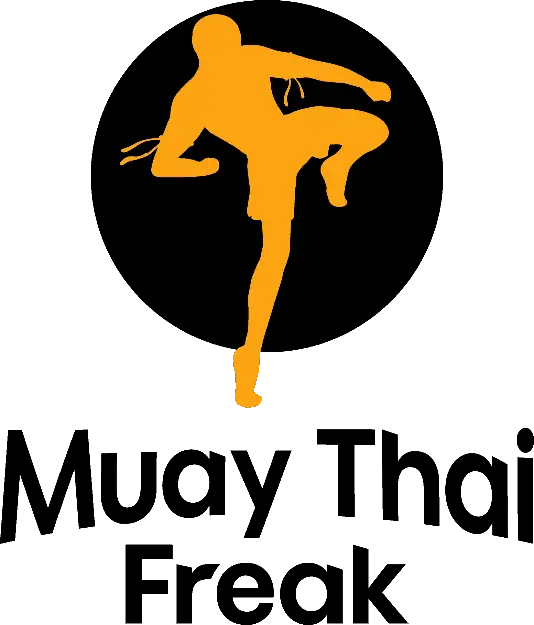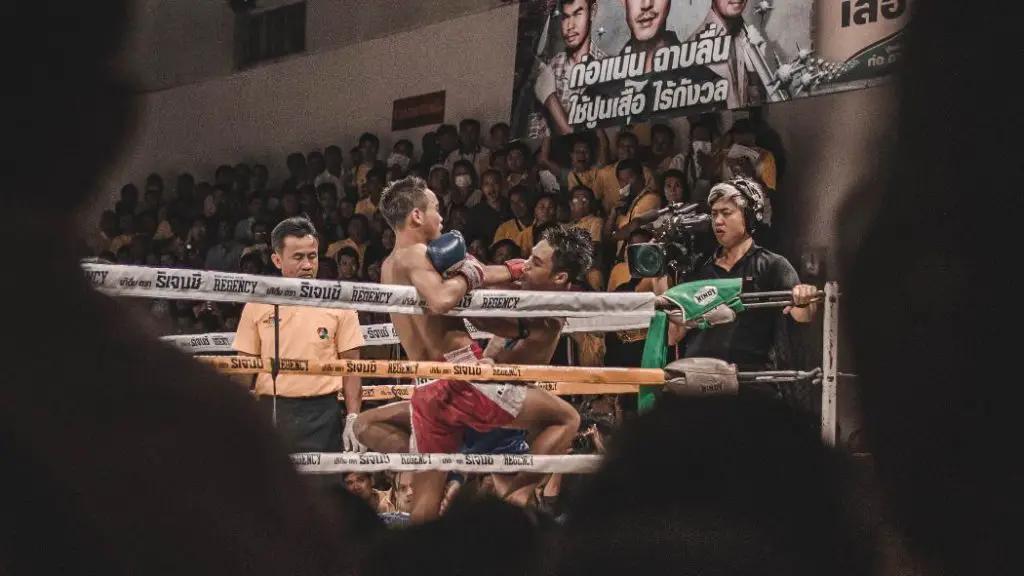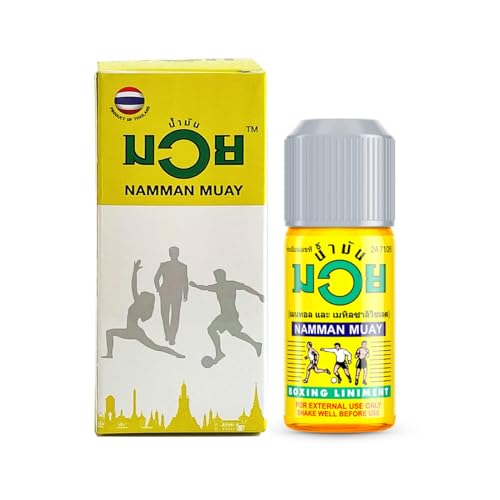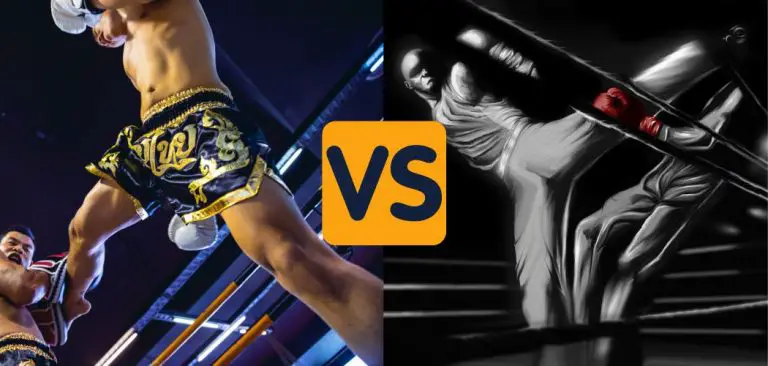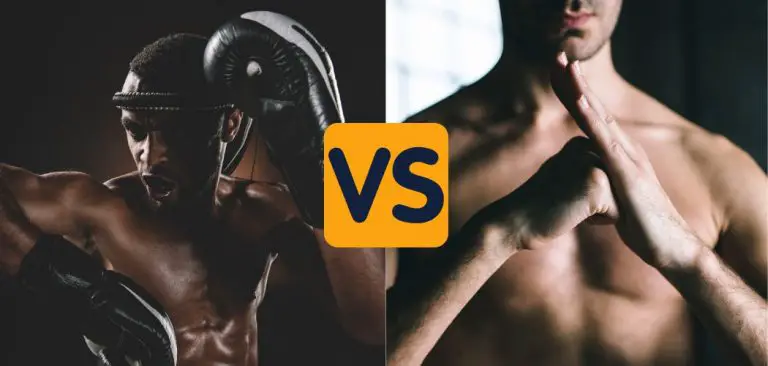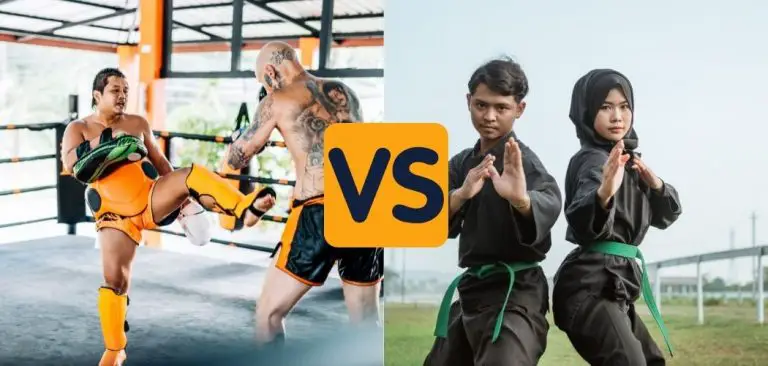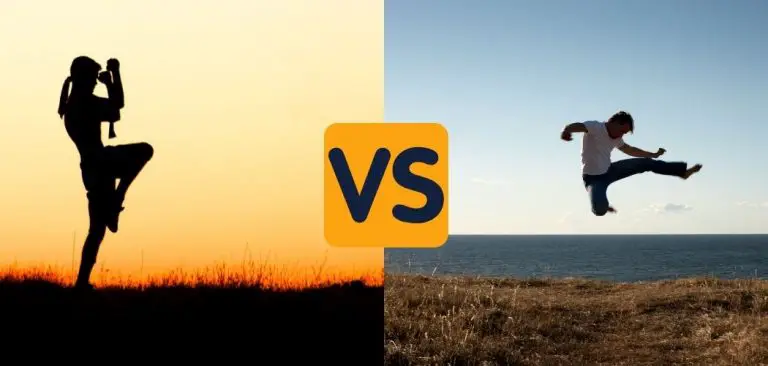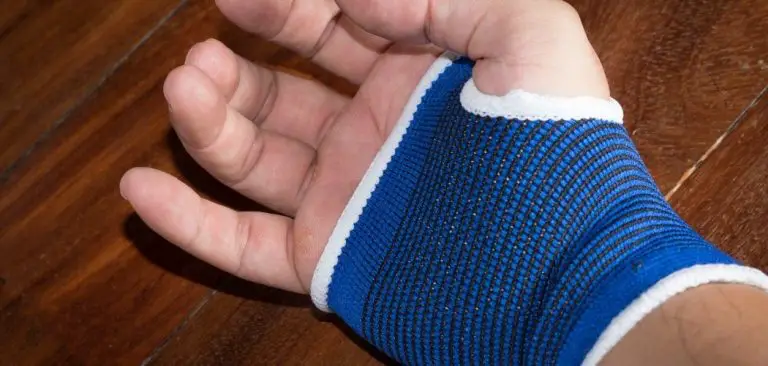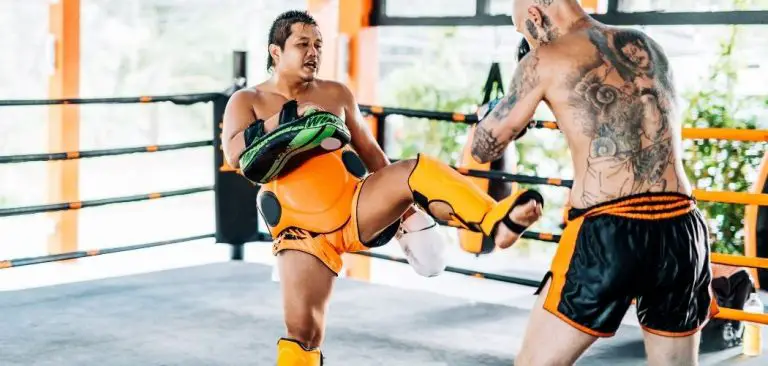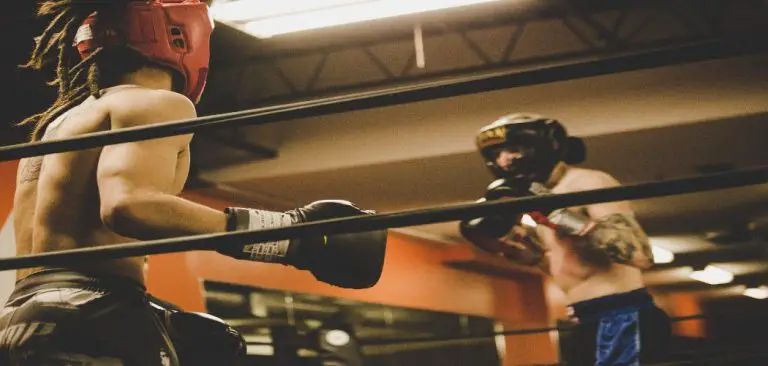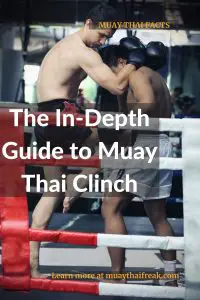
The first guy to show the brutality of Muay Thai clinch inside the Octagon was Wanderlei Silva, a Brazilian striker and a master of Muay Thai plum. Rampage Jackson was one of the best wrestlers back then, but it seems he was too soft for this outstanding knee specialist and the most influential Muay Thai clinch dude in the history of MMA.
I’m a diehard Muay Thai addict and a person who enjoys analyzing every single situation inside the ring or Octagon. I’ve seen many situations where the great wrestler or grappler was teleported into another dimension with a stunning knee or uppercut. Muay Thai stanza offers great possibilities – stuffing takedowns, countering attacks, destroying extremely aggressive opponents, and a lot more.
Muay Thai clinch is dangerous due to the brutality of knees, elbows, punches, and trips. Don’t forget extreme angle changes and weird movements that confuse even the greatest masters of the game. Level change from close range is also a realistic possibility.
But if you’d like to take a look at an Octagon bout, it means an even greater level of success. When your foe is trapped against the cage, you can end the fight quickly via a barrage of knees, or counter violent slam attempts before the wrestler gets a hold of you. I will now analyze each Muay Thai clinch position step by step.
Table of Contents
What Is Muay Thai Clinch And What Makes It So Important In The Fight?
I’ve heard many fighters calling clinching “the trademark” of the ancient Siamese martial art and one of the greatest ways to parry an aggressive foe. If you think properly and move like a cat you could end the bout in less than 10 seconds. Shortening the distance and grabbing your rival disrupts his game and leads to many openings and abilities for punishment.
Even when you face a defense specialist, his guard is gonna be helpless when you establish a Muay Thai plum and start unloading a barrage of straight or diagonal knees to the head.
But Muay Thai clinch is not made for bullies, you must be intelligent and outsmart your opponent. Don’t spam strikes, change levels and look for unprotected areas, react in the split of a second. This video below is pretty much educational, I kindly recommend you to watch it.
Four Basic Positions Of Muay Thai Clinch
There are many clinching positions in Muay Thai, but I will focus on the four most basic ones (beginners should learn this first, I am not joking):
- Double collar tie (pummel or Muay Thai plum);
- Single collar clinch;
- Over-under (one under-hook in);
- Double under-hook (both under-hooks in).
Muay Thai Plum
I know many MMA commentators who call this position Muay Thai plum or “pummel”, hence the terminology says “double collar tie”. Jon Anik and Dan Hardy obviously can’t agree as Jon comes from the USA, while Hardy’s a Brit.
But call it however you want. Let’s get to the point – this is one of the most dangerous positions for your opponent as you’re giving him two options – improve the position or block the strikes by any means necessary. You’ll break his arms or hands if he doesn’t slip out for sure.
It’s not hard to set up this position, but I recommend you to try it out in front of the mirror with your partner first, you must learn it properly:
- Both fighters are in Muay Thai stance. Try to place your arms between your partner’s hands, step forward a bit and trap his head by putting both palms to his cerebellum.
- You must cross your fingers, then try to press with your forearms to the inside to stop the blood flow to his head and disable his movement, pulling your opponent diagonally towards the bottom. Try to put your right cheek against his right cheek or vice versa, this maneuver will limit his defensive options.
Potential Double-Collar Tie Strikes
Great position to stop the opponent and finish the bout. The list of vulnerabilities includes the stomach, oblique muscles, inner and lateral parts of thighs, and head. This means you can land strikes wherever you want.
I must pinpoint the three most dangerous strikes, according to my thoughts:
- Straight knee (both to the stomach and head)
- Diagonal knee (as it lets you adjust if the opponent tries to slip away)
- Rabbit knees (you can disable the rival from moving via hitting to the nerve, then attack with an aggressive level change to end the fight)
Mauricio “Shogun” Rua showed some high-level Muay Thai plum skills in the early era of the MMA.
You can also go for a horizontal knee, but you’ll have to disable your opponent from moving, so I recommend you make body contact or try to put your head next to his head. This strike is easy to defend so be cautious.
You have so many possibilities from this position – leg and calf kicks, uppercuts and hooks, short elbows, trips and sweeps, even leg kicks. I am sure this is the most dangerous area of Muay Thai clinch.
In MMA, pressing against the cage leads to more opportunities for defense, so I recommend you to attack the spleen or liver first. Leaning on the fence protects from head strikes, and your goal is to disable the opponent’s defense, so please stick to my recommendation and turn Muay Thai clinch into your perfect ally!
Another example of a top-notch double-collar tie is the fight between Wanderlei Silva and Cung Le.
Single Collar Clinch
There are so many ways to hurt the opponent from here. But your goal is to improve the position to double-collar tie. Yet, if you can’t, try punishing the rival from here and look for the openings. Single-collar clinch is equally dangerous both for you and your foe.
Here’s my piece of instructions:
- Wrap your left arm and hand around your opponent’s left arm, and try to push your leading leg slightly forward. I kindly recommend you put your right arm on the opponent’s biceps, if possible.
- If your opponent did the same, here you are – single-collar clinch position is established. Try to move a bit forward via step-drag and put your leading hand on the back of the opponent’s head for more control.
Single Collar Clinch – Striking Never Ends
Your rear arm is free, while your leading arm controls the position and holds the opponent. You can strike with your free hand. Potential strikes are hook, uppercut, slashing elbow, horizontal elbow, spear elbow, foot stomps, and all kinds of knees to the body.
My piece of advice is to try to crack your opponent open with a hook or horizontal elbow, then go for a slashing elbow to confuse him as he’ll have a hard time setting up the defense. The uppercut is an excellent solution if your enemy marches forward and tries to change the position to over-under.
Combine diagonal, horizontal, and straight knees to the body. You’ll need to take a step back for the straight knee, but you can also perform it while you retreat. This strike is also good to set yourself free when the aggressive foe pushes you towards the ropes. Look at Saenchai, the legend of Thai boxing, in action.
Elbow guys should love this position, as your hand on the back of the opponent’s head leads to better control and lets you land diagonal, spear, horizontal, or slashing elbow to his head and cut him open. Yet, proceed with caution, as he can do the same, and the doctor could stop the fight.
Another great side of the single-collar clinch is because it lets you transition to another position easily – double-collar clinch, over-under, both under-hooks in, cross-face defense…
Over-Under
I don’t like this position because it demands an enormous level of technicality. Yet, I’d recommend it to sweep and trip experts, rabbit knee specialists, and close-range strikers. This position is very popular in Lethwei too due to headbutts, which are prohibited in Thai boxing.
It is one of the trickiest Muay Thai clinch positions. It is more suitable for MMA fighters with good wrestling, but please, Thai boxers can work on it and land big bombs. You just need a good understanding of the position and a lot of training.
Setting the position up:
- Both fighters are standing in the Muay Thai stanza. Your foe should put his hands to your oblique muscles or ribs, and trap one of your arms. If he controls your left arm, you should put your right arm under his left arm.
- Congrats, over-under is set. I advise you to put your left leg diagonally to the left as this stops the opponent from moving and changing positions.
Over-Under Strikes – You Have To Be Very Technical
It is awesome for wrestlers or grapplers, but bad for strikers unless you mastered Muay Thai sweeps. But you can attack thighs. I think the rabbit knee is the best strike from this position, while the small or diagonal knee comes next.
Horizontal or spear elbow is fine, but you don’t have enough space for slashing elbows, so you can’t hurt your opponent badly. I think you should try to improve the position to a single-collar or double-collar clinch, so try to put your arm on the opponent’s neck and move to the left and right, set yourself free.
Double Under-Hooks
When you’re dealing with a better striker than you, this position can save you from an excessive amount of damage. Shorten the distance, disrupt the attacks, and try to work on a different aspect of the game. Eat a strike or two, put your both hands around the opponent’s waist and try to defend. If he lacks in short-range strikes, this will be a terrible position for him.
How can you do it? Let me describe for you:
- You’ll have to explode from the Muay Thai stanza and put your arms under the inner part of the foe’s biceps. Second, try to create at least a bit of space between your enemy’s ribs and forearms.
- Try to advance (step-drag or regular step) and put your both forearms and hands around his waist, crossing your fingers. Touch his body with your body, keeping your head to the side (left or right from the rival’s head).
- You’ve locked double under-hooks.
You might learn a lot from this instructional video. This is a way more defensive than offensive position in a clean Muay Thai combat.
Can I Strike From Double Under-Hooks?
Well, it’s not a dream position for you, but there are a few options. Forget about your arms (elbows and fists), and don’t try to use your legs or you’ll end up on the floor.
So what can I do? You can try to make some damage with the knees. If you hold the opponent tight, the small and diagonal knees should make problems. Also, don’t forget about attempting curved or rabbit knees. When you create some space, try switching to a better Muay Thai clinch position, or stick to a level change (head strike should come after a knee to the body).
MMA And Muay Thai Clinch
I’ll be honest with you – teaching grapplers or wrestlers a lesson has never been easier thanks to the positive sides of Muay Thai clinch. Yeah, you have so many options under your belt, just use them wisely.
I have a great example for you. When you’re in control of the opponent’s back, and he’s faced towards the cage, you can land some knees to his body or legs.
I am a diehard fan of spinning back elbow against the cage. Jon Jones did this strike many times. The video below shows you how to do it.
For example, you are not allowed to throw 12-6 elbows, but the referee didn’t see the illegal move in the bout between Gonzaga and Browne, which led to a spectacular win for the former Hawaiian MMA superstar.
Jon Jones’ only loss of the carrier happened because of breaking this rule. The ref Steve Mazzagatti immediately disqualified Jones after an illegal 12-6 elbow from the mount. Jon lost the match, despite it being a one-sided ass-whooping where the former 205-division emperor was swinging the hammer.
But there is a modification of this strike today. When you target the side of the opponent’s head, the referee will not sanction it. We’ve seen a great appliance of this move in the match between Modestas Bukauskas and Andreas Michalidis, where the Lithuanian fighter dazed Greek, who was unable to recover between the rounds. The ref Dan Movahedi had no choice but to wave off the contest. You can call this “modified version of 12-6”.
Wrapping It Up
It is always nice to watch two fearsome strikers landing entertaining strikes all over the place. Yet, Muay Thai clinch is extremely entertaining for diehard fans of the ancient Siamese martial arts because one tiny mistake leads to a potential knockout or a massive cut. If you compete in an MMA, teaching grappler or wrestler a lesson has never been easier.
Plus there are many options. You can disrupt a striker via both under-hooks, or out-smart an opponent who sticks like glue. Think, train, and learn, clinching is hard to master, but very dangerous against every single opponent in the world!
Last Updated on May 21, 2022 by Deni
